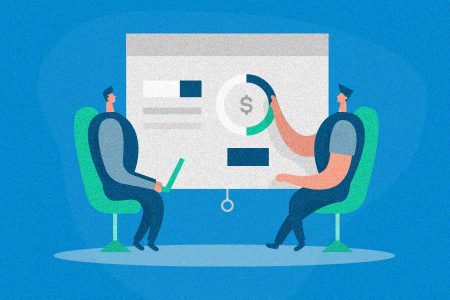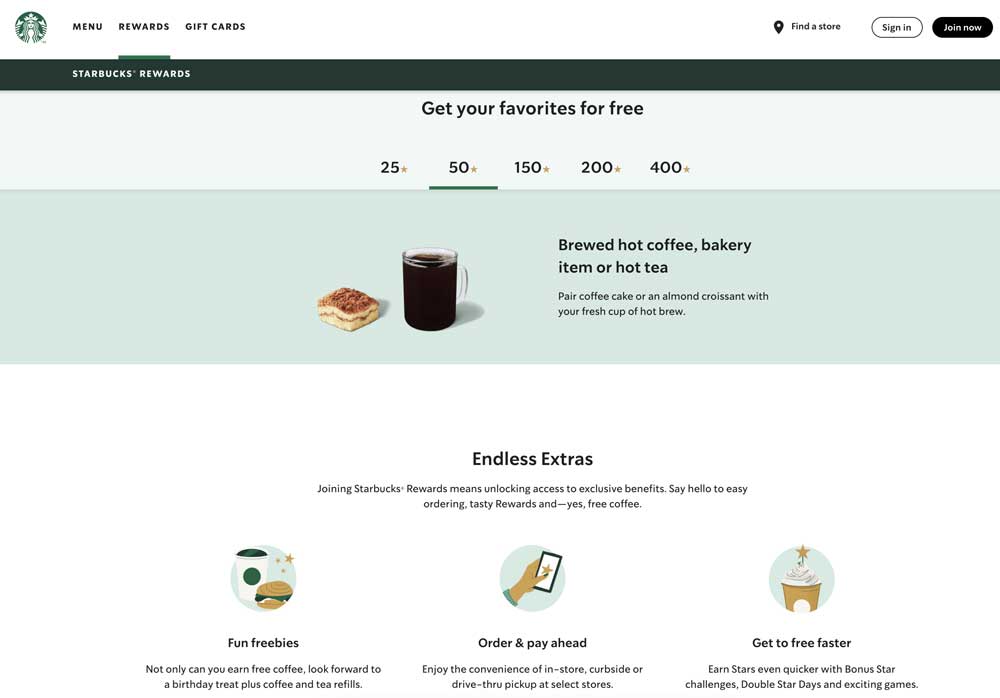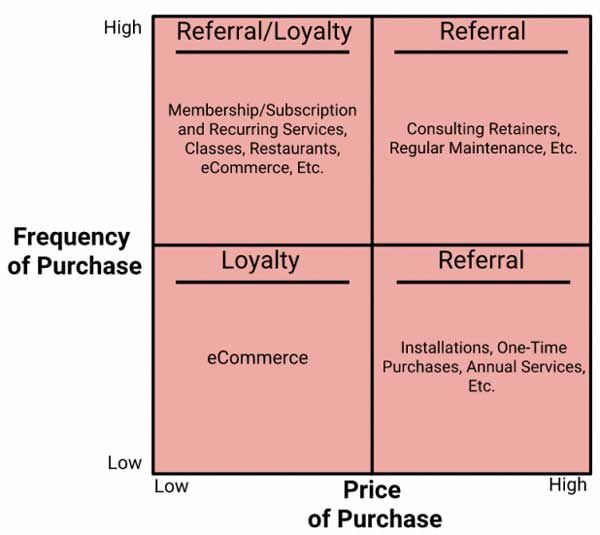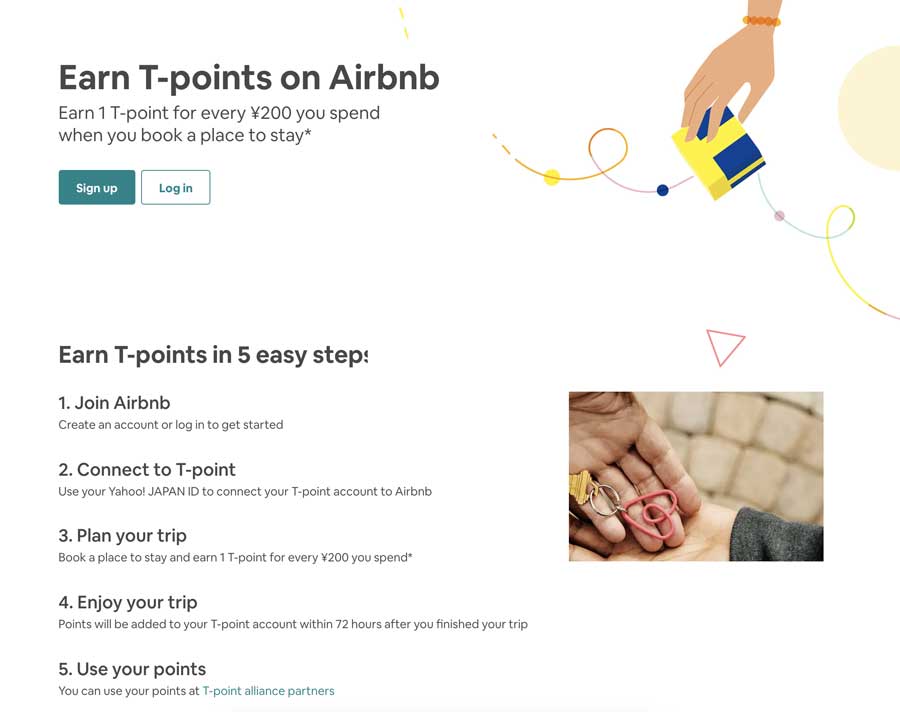A loyalty program is not the same as a referral program. While both programs offer rewards to customers, the difference is how these rewards are earned. In other words, what’s the action your business wants to encourage?
With loyalty programs, customers are rewarded for their repeat purchases. With referral programs, customers earn rewards for recommending a business to their friends and family.
The end result, whether it’s a loyalty or referral program, is to increase your customer base and total sales.
What are loyalty and referral programs?
Loyalty and referral programs are both marketing strategies that reward your customers and help increase sales and retention.
A loyalty program rewards customers for continuing to purchase from a particular business. Each customer is given their own account or loyalty card (also referred to as a membership card or rewards card), which keeps track of all their purchases.
In a loyalty program, customers earn points for every purchase. Once a number of loyalty points are accumulated, they can then be redeemed for free products, cash back, or other reward perks.
A referral program rewards customers for sharing a brand or product with their friends and family. Customers who join your referral program are assigned a unique referral code, which tracks all their shares and referrals. If one of their referrals end up making a first purchase, the customer (and possibly the referred friend) gets a reward.
How does a loyalty program work?
A successful business doesn’t just have customers. It has loyal customers. But with so many options out there, keeping a loyal customers base can be tough.
Not only does a loyalty program reward customers who stick with a business, it also creates a sense of exclusivity and community among other loyal customers. When a customer actively participates in a loyalty program, it means they continually choose your business over any other.
The best way to understand how a loyalty program works is by looking at an example.
Starbucks: A real-world loyalty program example
How did Starbucks become the most popular coffee chain today? Part of it is starting at the right time. Part of it is having thousands of locations worldwide. And part of it is their customer loyalty program.
All a customer has to do is join the loyalty program, and they immediately start to earn a star for every dollar spent at the coffee chain (and even more stars when they use the app or get a Starbucks Rewards Visa Card). Customers can also preload a digital Starbucks card with funds, making their purchase even easier.
Stars can be redeemed for customized drinks (25 stars), hot brew and baked item (50 stars), and more.
How does a referral program work?
Referral programs motivate existing customers to share your brand with their friends, family, and colleagues. Thanks to their direct personal recommendations, you’re able to expand to an audience you otherwise may not have been able to reach.
A referral program also builds on your existing customer relationships and offers them an opportunity to earn special rewards (i.e., cash back, discounts).
And since rewards are only paid after a purchase is made, referral programs are one of the most cost-effective ways to increase your conversion rate and improve your bottom line.
Dropbox: A real-world referral program example
Dropbox is one of the biggest online file sharing and storage services. It’s also an example of how a referral program brought a startup early success.
Instead of cash or discounts, Dropbox’s referral program offers customers the opportunity to earn extra space. For example, customers with a basic account can earn 500 MB for every successful referral, with the referred friend also getting 500 MB in their new account. (Plus and Professional accounts can get 1 GB per referral.)
This dual-sided incentive structure is attractive to anyone who needs a simple online storage. By incorporating the product right into the reward itself, Dropbox’s referral program highlights its solution and gets customers actively using the product.
Dropbox saw over 2.8 million referral invites during the first 18 months of their referral rewards program.
The difference between loyalty vs. referral programs
Loyalty and referral programs are often confused with one another. While they’re both highly effective ways to grow customers and sales, customer loyalty referral programs have some key differences.
Benefits of loyalty programs
The benefit of loyalty programs is increased customer retention and repeat purchases.
Customer retention is a business’s ability to encourage repeat purchases from its customers, and prevent them from leaving for a competitor. Increasing customer retention rates even a tiny bit can result in big increases in profit. Studies show “existing customers are 31% more likely to spend more on their average order value with your business.”
And by offering rewards for every purchase, a loyalty program increases a customer’s investment in your business. The more they purchase, the more they get in return. And the cycle continues.
In the long run, a successful loyalty program helps your business stay competitive and increase its customer retention.
Who should use a loyalty program
It can be argued that all businesses should use a loyalty program. However, loyalty programs can be especially beneficial for businesses that sell consumables or frequently used products or services (i.e., hotels, airlines, restaurants, coffee shops).
A loyalty program works by showing customers the value of staying loyal to a business. But if customers don’t purchase often enough, a loyalty program won’t provide much value. The time frame to earn enough points for a reward will be too long.
On the other hand, if customers are already buying your products on a regular basis (say, for their daily cup of coffee, or their usual holiday stay), they’ll see immediate value and are more likely to remain loyal.
Benefits of referral programs
Referral programs offer a number of benefits for customers and businesses. First off, you’re building stronger relationships with existing customers. It provides another opportunity to show appreciation for your customers aside from the standard transaction.
A major benefit of referral marketing is that it’s more trusted than traditional mass advertising. Customers who already love your products share their personal recommendations to others they know who might be interested or need your product. So by the time a new referral arrives on your site, they already have a good impression of your brand and are more likely to become a customer.
If you run your program with referral software, you can also track the customers actively participate in your program, and discover your best brand advocates.
Who should use a referral program
Referral programs are a proven way to maximize the word of mouth you’re already getting. To run a successful referral program, we recommend a business has three things:
- A good product or service worth referring
- A base of loyal happy customers (it doesn’t need to be big)
- Some organic word of mouth already happening
(After all, no referral program or reward can make even the best customers recommend you to others if you don’t have a good product and they aren’t happy.)
Other than that, referral programs are a great marketing strategy for businesses of all sizes and industries.
We often hear of referral program success in online or digital businesses, such as DoorDash, Morning Brew, Groupon, and the like. But referral programs can work for brick-and-mortar businesses, as well. As long you can connect customers to the friends they referred (a referral card with a unique code is an easy way to do this), your business can run a referral program.
How to choose between loyalty and referral programs
So far, we’ve gone over a lot of information about loyal customer referral programs. But how do you know whether you should run a loyalty program, a referral program, or both?
To help you decide what type of rewards program will give you the most success, consider these two factors:
Frequency of purchase: How often are customers buying from your business? Once a year, once a month, or as soon as they run out of your product?
- Loyalty programs work best when purchases are more frequent, and customers can quickly gain rewards and added value.
- Referral programs can work with both low and high-frequency purchases.
Price of purchase: What’s the average order value of your customers? The price a customer pays per purchase can influence what type of program will appeal to them most.
- Loyalty programs may not work with more expensive products if it means they don’t purchase these products frequently enough.
- Referral programs work well regardless of the price of purchase.
Frequency of purchase and price of purchase can give you an idea about which program will work for your business. Now let’s go into more detail. Below, we go over the different businesses and industries, and give our recommendation for what programs typically give the best results.
1. One-time services
This includes installations, annual services, and other one-time purchases. For example, a roofing company or carpet installation, where your customer spends a lot of money for a single purchase.
Best option: Referral program
2. Recurring services
This includes classes, routine maintenance, consultations. For example, pest control services, art classes, a personal trainer, a salon, or even a dentist. These types of services are done on a regular basis, whether weekly, monthly, or annually. Although there’s a wide price range for recurring services, they’re usually more affordable than a one-time service.
Best option: Both loyalty and referral programs
3. Restaurants
This includes fine dining, cafes, quick casual, fast food, food trucks – any facility that sells food. This type of purchase is affordable (or can be budgeted for) and customers often frequent the same establishment a number of times.
Best option: Loyalty program
4. Ecommerce
This includes any buying and selling that happens online. A well-known example would be Amazon, although there are many other online stores thanks to platforms like Shopify and Etsy. Online purchases are generally affordable and even recurring, which means an ecommerce store can have many repeat purchases from loyal customers. (Larger purchases are often still done in person.)
Best option: Both loyalty and referral programs
5. SaaS
From streaming services to CRM solutions, SaaS applications and web-based software are common expenses these days. They are typically a recurring expense (paid monthly or yearly). However, given the range of different services, the price point can be a less than a hundred to hundreds of thousands a year. In this case, the frequency and price are based on the service.
Best option: Referral program
6. Subscription boxes
It seems every nook and cranny in the market has a subscription box service. Some examples include pet boxes, children’s boxes, makeup boxes, and even specialty food boxes. Subscription boxes are usually positioned as an affordable monthly purchase.
Best option: Referral program
Is it possible to run both programs at once?
Yes! It’s actually common to see businesses run both types of programs with great success. But you have to first determine whether running both a loyalty and referral program will work for your particular business.
For example, a one-time service or big purchase business won’t see much benefit from a loyalty rewards program. This is because customers only get rewarded for each purchase. If customers aren’t making regular purchases, a loyalty program won’t make much sense to them.
Consider a car dealership, where customers are only buying a car every few years (at the most). In this case, customer purchases are too infrequent to make a loyalty program worth their while.
On the other hand, referral programs will only work if customers already love your product and generating organic word of mouth.
Continuing from the car dealership example mentioned above, if a customer has a good experience buying their car at your dealership, they’re more likely to refer their friends when the conversation comes up.
A referral program gives the new customer a discount or cash back on their car, helping to secure the sale. The referring customer would also receive a token of thanks for their support, further motivating them to share with more friends.
However, if your product or service isn’t ready for a bigger audience, or you’re receiving a lot of customer complaints, it’s better to address these concerns before generating more word-of-mouth marketing for your business.
How to know if you can run both a loyalty and referral program
If your business offers a product or service purchased frequently enough and you’re in a highly competitive market, you’re likely to see benefits from both a loyalty and referral program.
- A loyalty program offers value to customers, allowing them to earn points and rewards for every purchase.
- A referral marketing program will also encourage customers to spread word about your service and help you stand out from the competition. Not only will they earn even more rewards, but the people they refer will also be more inclined to become customers if they’re rewarded as well.
If you decide to offer both customer loyalty referral programs, you may want to use a points-based system or offer various rewards. This will prevent any possible program cannibalization, and encourage customers to participate in both programs.
By making both loyalty and referral programs attractive and distinct enough, your business can see an increase in sales and customers.
Airbnb: A real-world loyalty and referral program example
Airbnb may have seen early success thanks to its trailblazing referral program (which used to offer travel credits for first-time stays). But it also runs an engaging loyalty program in some countries.
Through one of its regional loyalty programs, Japanese residents are invited to “earn 1 T-point for every ¥200 you spend when you book a place to stay.” The T-points are sent out within 72 hours after the trip, and the points can be used at one of the many T-point alliance partners.
Make things easy with loyal customer referral program software
Yes, you can probably run these programs on your own. But as with all routine processes, rewards program software makes things much easier. No matter what type of program you run, there’s a lot of behind-the-scenes work needed to give a seamless customer experience.
Choose the software that fits your needs, whether it’s a tool specific to loyalty programs or one that specializes in referral programs.
A dedicated software program automatically handles everything from signing new members to tracking purchases to measuring results, allowing you to focus on all your new customers.
Key takeaway
One of the most remarkable things about these two reward programs is they create value for your customers and your business. Whether you decide to run loyalty programs, referral programs, or both, you create the opportunity to establish long-term customer relationships that grow your business.








